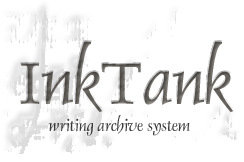

Before we start on the InkTank Web installation, make sure you have the important information written down from the last section:
InkTank uses friendly, permanent URLs. It is suggested that you create a permanent subdomain to use with your new archives, however, InkTank itself can be installed wherever you like. Creating subdomains is, however, beyond the scope of this InkTank install document. Your webhosting provider will have extensive documentation on the subject. For DreamHost, the instructions are in the Knowledge Base.
Create a location to store the InkTank files, peferably by creating a blank subdomain.
From the project files page, grab the latest InkTank version. If you're using Windows, it's the .zip version you want. Extract it somewhere on your hard drive. Inside, you'll find the raw .php files that make InkTank run. We're interested in the files within the distribution directory.
You will need to copy config-dist.txt into the InkTank directory — in other words, move it out of the distribution directory. Then open it in your favorite text editor: NotePad, TextEdit, or vi will work nicely.
Within the config file are instructions. You will need to modify the file using the information you gathered in the last section. Follow the directions in the file. When you're done, rename the file to “config.php.”
Using FTP, upload the contents of the InkTank data from the .zip file (not the directory itself, nor the zip file) to your favorite storage location on your server. Your webhost is guaranteed to have great directions for doing this, but I bet you know how to already.
Note that you must upload the file .htaccess from the zipfile. Don't forget it. You'll find your site works except you can't browse authors, view stories, or see awards if you forget it.
When you access your new InkTank installation, if all went well, you should see a notice that you need to remove installation.php. Delete it. Otherwise, follow its instructions to (hopefully) diagnose any installation problems you may have had.
Congratulations, if everything went well, your InkTank installation is ready to be accessed by the world. (Don't forget about that delay your webhost might have, though.) Go to your subdomain, and revel in your newly created InkTank installation. Of course, you can't add or change anything yet—but that's the next step. Continue on…
InkTank didn't work perfectly on the first attempt? Too bad… Here's a list of common mistakes and problems you might have encountered. If you've tried them all and still have problems, post a message in our forthcoming online dicussion forums.